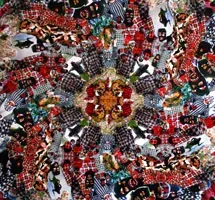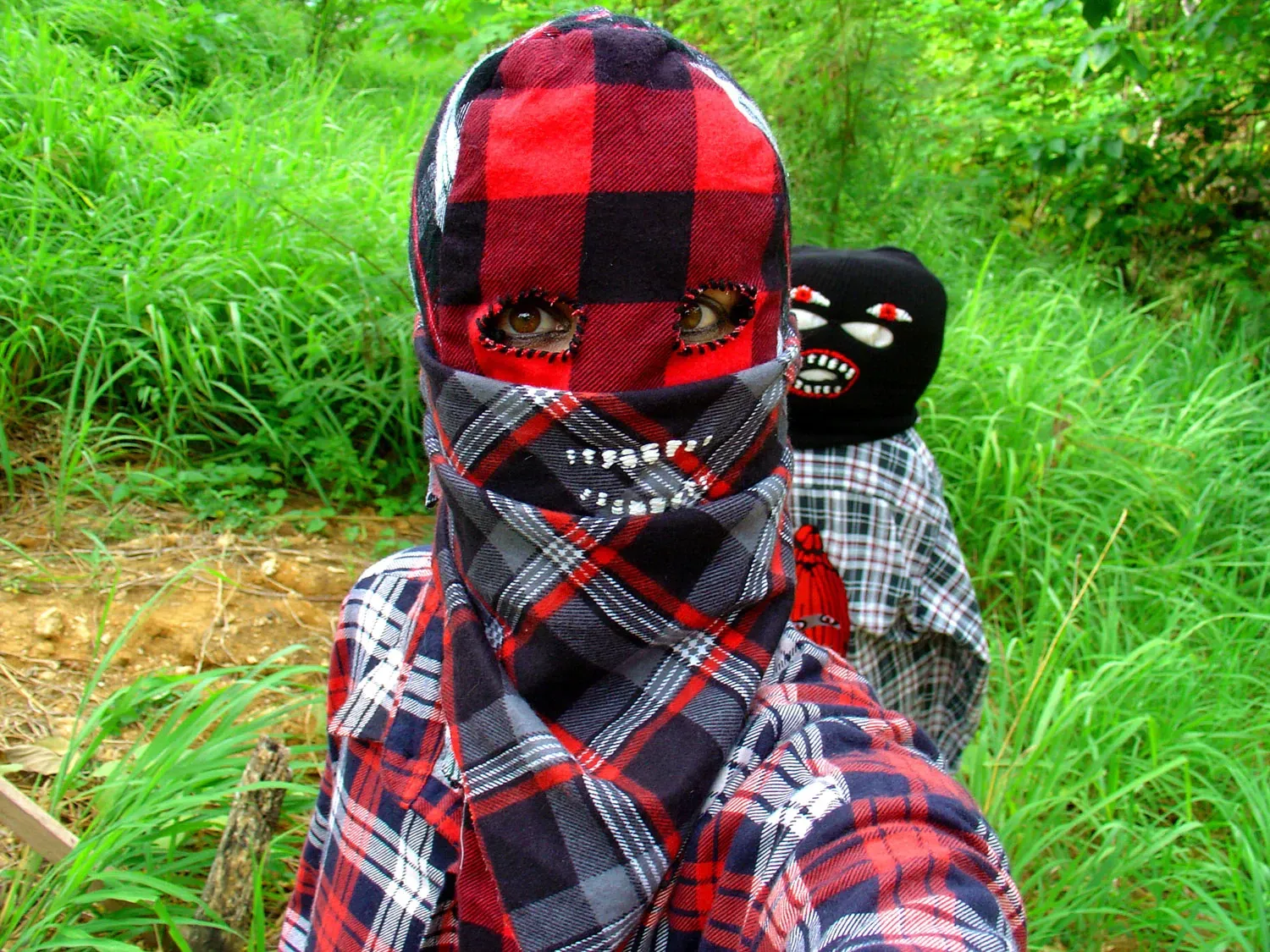Camouflage exercise in urban undergrowth
Written by

Paramilitary-styled masks are being constructed in a back room in Central Auckland for an operation in the urban undergrowth.
The exercise will form part of a video-art installation exploring the visual, political and psychological potency of human masking - a recurrent interest of current Elam International Artist in Residence, Jemima Wyman.
The US-based, Australian-born contemporary artist is at The University of Auckland’s Elam School of Fine Arts for a five week residency – taken out of her environment to reflect, research and involve students in her current body of work on camouflage.
Jemima has an overriding interest in masking: “I was interested in the body, its physical parameters and the psychology of a body trying to understand itself. I started to use characters, masking and costuming in order to examine these ideas. Masking exaggerates the abstract, the expressiveness of the eyes or the mouth — the parts that open out into the world. It’s about being someone else, being in a different kind of body — a body that opens up to space, the grotesque, the threat of violence, humour – masking transforms the limits of the everyday body.
“You can blend in or transform yourself to become more god-like or animal-like or the mask can work politically as a way to leave the everyday world behind to provide anonymity — liberating but also dehumanising.
Jemima’s early works such as Catastrophe theory and Chromophonozone worked with the carnivalesque and fantastic. “I didn’t want the works to only be discussed in terms of fantasy. I wanted people to think about the more serious ramifications of the masked body – which is why my work more recently deals with functional garments and masks used in combat and the military.
“The thing about camouflage is that it visually breaks up the figure to blend and conceal into the environment but by doing this it forms a visual and psychological group identity – a communal body and the visual articulation of community which can be strongly nationalistic. Although designed for blending in it holds an inherent dilemma - if you are a moving body then it is highly likely that you could be in the wrong environment for the camouflage. Instantly the predator becomes prey standing out against a different environment.
“It is quite exciting that something visual has so many qualities and can inform on many levels, that’s why I have arrived at working with masking and patterns which open the body up to space or making a body blend in with space or other bodies exploring those ideas and seeing where they take me.
As a practising artist Jemima works across different mediums — painting, video, performance, collage, photography and increasingly uses communal interactive installations: “I want to present my work in such a way that people think about their own position or other people’s position as changeable exploring these non normative communal bodies.
Further information:
The Elam International Artist in Residence Programme is generously supported by Dame Jenny Gibbs. Established in 1998, the Programme brings remarkable and talented artists from all over the world, thereby enhancing the opportunities for learning about contemporary practice and methods of working for Elam’s students and the wider creative community.
The University of Auckland’s National Institute of Creative Arts and Industries comprises the School of Architecture and Planning, Elam School of Fine Arts, the Centre for New Zealand Art Research and Discovery (CNZARD), the School of Music and the Dance Studies Programme.
